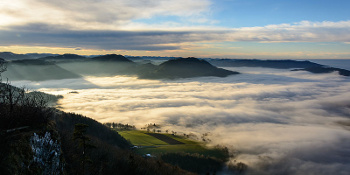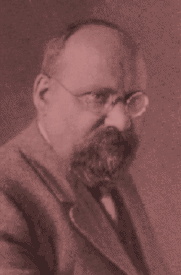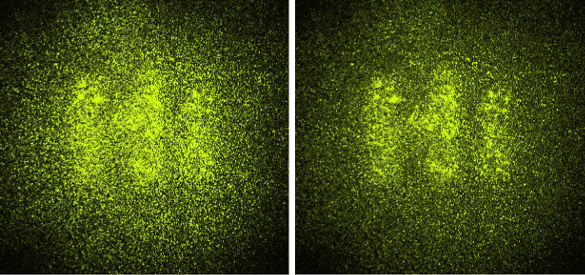Combating Glare
November 10, 2016
I'm definitely showing my age when I recall the 1961
recording, "
Does Your Chewing Gum Lose Its Flavour (On the Bedpost Overnight?)" by
Lonnie Donegan. Donnegan and his music were a
British staple before
The Beatles and the "
British Invasion." The Chewing Gum record reached fifth position on the
Billboard Hot 100.
I mention the Chewing Gum record for its inclusion of the simple
riddle, "If
tin whistles are made of
tin, what do they make
foghorns out of?" While this illustrates the imprecision of the
English language,[1] it also serves as a roundabout introduction to our topic of seeing things through a
fog.
I've driven through dense fogs on several occasions, and it was not a pleasant experience. several fog
idioms come to mind: Not seeing your
hand in front of your
face, fog so thick you could cut it with a
knife, and fog as thick as
pea soup. As we all know, fog is a
mass of
water droplets suspended in
air at
ground level; in other words, a
cloud at the
Earth's surface. Fog forms when the air
temperature is very close to the
dew point.

This is a typical early morning landscape just west of Tikalon's location in Northern New Jersey.
Fog over the Erlauf valley near Scheibbs, Austria. (Photo by Uoaei1, via Wikimedia Commons.)
It's fairly obvious that the
optical properties of fog arise from
light bouncing off the water droplets. This
scattering is called
Mie scattering, named after
German physicist,
Gustav Mie. Mie solved
Maxwell's electromagnetic equations for a medium containing
refractive transparent spheres, which is a good
approximation to the water droplets in fog.
Source code for Mie scattering
calculations is available online for nearly every
computer language. One
C language implementation that
compiled for me can be found in ref. 2.[2] Using this program, I calculated the optical scattering from a water fog in air with the following properties:
Water refractive index = 1.33
Fog droplet diameter = 10 μm
Fog/air concentration = 0.00005 g/g
The calculated scattering coefficient at optical
wavelengths for such a fog was calculated to be about 85%.

Gustav Mie (1868-1957)
While Mie scattering describes optical scattering from particles larger than a wavelength of light, Rayleigh scattering describes scattering from smaller particles.
(Wikimedia Commons image, modified for artistic effect.)
My experience in
driving through fog demonstrated to me the utility of a system for viewing things through fog, although it was not apparent how such a system could be made. Now,
engineers at the
California Institute of Technology (Pasadena, California) have devised a
camera system that can image objects behind fog or other murky media by canceling out the glare.[3-4] Their method, called "coherence gated negation," uses
destructive optical interference to accomplish this task.[3-4]
The Caltech team was lead by
Changhuei Yang, a
professor of
electrical engineering,
bioengineering, and
medical engineering. Yang shared lead
authorship of the
paper describing the system with
graduate student,
Edward Zhou. Their coauthors included
postdocs,
Atsushi Shibukawa and
Haowen Ruan, and graduate student,
Joshua Brake.[4]
The Caltech system departs from the method of conventional anti-glare imaging systems in which the target optical signal is acquired in a short time window that rejects most of the glare when the target is illuminated by a
pulse of light. The Caltech coherence gated negation method selectively cancels the scattered light instead.[3-4] This is done by
destructive interference that combines one beam of light over another beam to cancel the unwanted signal.[4]
The illuminating
laser beam is split into twin
parallel beams, with one used to illuminate the target and the other to cancel the glare. The combination of these beams cancels most of the glare at a camera sensor.[4] To do this, the system must try a range of
amplitude and
phase values of a
reference beam to get the best cancellation of glare. They found that they are able to suppress glare by an
order of magnitude, even for a non-uniform optical
wavefront.[3]
As a test, the
research team placed
text behind a
millimeter thick block of
glass beads suspended in a
gel. This gel
filter rendered the text completely illegible. Using their coherence gated negation method, they could increase the
contrast of the text by a factor of about thirty (see figure). This produced a legible image.[4]

An example of the Caltech system of using destructive interference to image through glare. The obscured word, "HI," is made legible. As can be seen, continued research on this technique is still required. (Still frames from an Edward Zhou/Caltech animation.)
While imaging through
terrestrial fog is one potential application, there are others. This might be a
noninvasive way to optically examine
tissue under the
skin, as in
mammography, since the optical scattering of skin is similar to a dense fog.[4] While the image acquisition
rate of the system needs to be improved, says Yang,
"A very nice aspect of this method is that there is a fairly straightforward approach for increasing its speed by several orders of magnitude. Wouldn't it be nicer and safer if you can see the whole San Francisco bridge as you drive across it on a foggy day?"[4]
This research was funded by the
National Institutes of Health, and the
National Institute of Biomedical Imaging and Bioengineering, among others.[4]
References:
- Stephen Wolfram, "Computational Law, Symbolic Discourse, and the AI Constitution," Backchannel, October 12, 2016.
- Lihong Wang, and Steven L. Jacques, "Sphere Mie Scattering Program," (a C Language re-coding of a Fortran program by Tony Durkin and Craig Gardner created from information in Craig F. Bohren and Donald R. Huffman, "Absorption and Scattering of Light by Small Particles," John Wiley & Sons, 1983), 1993.
- Edward Haojiang Zhou, Atsushi Shibukawa, Joshua Brake, Haowen Ruan, and Changhuei Yang, "Glare suppression by coherence gated negation," Optica, vol. 3, no. 10 (October 5, 2016), pp. 1107-1113, https://doi.org/10.1364/OPTICA.3.001107. This is an open access publication with a PDF file available at the same URL.
- Robert Perkins, "Noise-Canceling Optics," Caltech Press Release, October 10, 2016.
Permanent Link to this article
Linked Keywords: Recording; Does Your Chewing Gum Lose Its Flavour (On the Bedpost Overnight?); Lonnie Donegan; Great Britain; British; The Beatles; British Invasion; Billboard Hot 100; riddle; tin whistle; tin; foghorn; English language; fog; idiom; hand; face; knife; pea soup fog; air mass; water; droplet; suspension; suspended; air; lithosphere; ground level; cloud; Earth's surface; temperature; dew point; morning; landscape; west; Tikalon; Morris County, New Jersey; Northern New Jersey; Scheibbs, Austria; Uoaei1; Wikimedia Commons; optics; optical; light; light scattering; Mie scattering; Germany; German; physicist; Gustav Mie; Maxwell's electromagnetic equations; refraction; refractive; transparent; sphere; approximation; source code; calculation; programming language; computer language; C language; compiler; compile; refractive index; diameter; micrometer; μm; concentration; gram; wavelength; Gustav Mie (1868-1957); Mie scattering; particle; wavelength; light; Rayleigh scattering; driving; engineer; California Institute of Technology (Pasadena, California); digital camera; destructive optical interference; Changhuei Yang; professor; electrical engineering; bioengineering; biomedical engineering; medical engineering; authorship; academic publishing; paper; postgraduate education; graduate student; Edward Zhou; postdoctoral research; postdoc; Atsushi Shibukawa; Haowen Ruan; Joshua Brake; pulse; laser beam; parallel; amplitude; phase; reference; order of magnitude; wavefront; research; text; millimeter; glass; bead; suspension; suspended; gel; filter; contrast; word; terrestrial; noninvasive; tissue; skin; mammography; bit rate; San Francisco-Oakland Bay Bridge; National Institutes of Health; National Institute of Biomedical Imaging and Bioengineering.